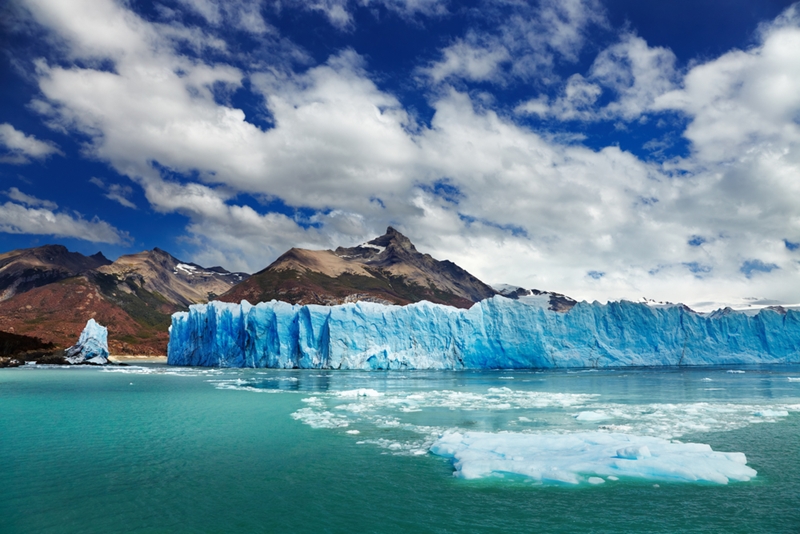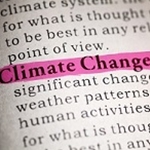An update on recent climate change research
In early December world leaders and scientists convened in Paris for the Conference of the Parties on the U.N. Convention on Climate Change, reported The New York Times. During the two-week event, attendees discussed rising global temperatures and the associated environmental fallout. While presidents and prime ministers pitched industrial strategies for reducing carbon dioxide emissions, climatologists expanded on new scientific developments, contributing data points to an ever-growing constellation of climate change research.
India at the center
India is on course to surpass China as the world’s foremost carbon emitter, reported Wired. Currently, the country derives much of its energy from vast, unregulated coal plants. Its most productive coalfield covers almost 200 miles and burns endlessly, sending continuous clouds of carbon-laden soot into atmosphere. As a result, air pollution is a major issue in India – the country is home to 13 of the 20 most polluted cities in the world, reported NPR.
Coal has also altered the Asian superpower’s physical makeup. Rising continental temperatures have eroded glaciers located in the northwestern quadrant of the country and dehydrated valuable farmland.
“We’re getting unseasonal rain, we’re getting hailstorms, we’re getting frightening developments which are impacting our farmers,” Sunita Narain of India’s Centre for Science and Environment said in an interview with the news agency. “It should scare us!”
At the conference in Paris, Indian energy experts presented a plan to address these issues. The country intends to ramp up efforts to develop scalable solar and wind technology. It also promised to continue its reforestation efforts. However, this strategy didn’t include a cap on carbon emissions which troubled fellow conference attendees. Indian officials argue that its coal industry drives essential socioeconomic development, as coalfields provide valuable jobs to its citizens, 21 percent of which live in poverty, reported the Reserve Bank of India.
“India is the biggest piece of the puzzle,” Sierra Club Director of Federal and International Climate Campaigns John Coequyt said in an interview with Wired. “Is there a way for that rapid growth to happen quickly and pull people out of poverty using a lot more renewable energy than has ever been used before? Or will they build more of what they have – huge coal plants with almost no pollution controls?”

As global temperatures rise, glaciers disappear.
Nearing the two-degree threshold
According to BBC, scientists project that the global temperature will have increased by 1.02 degrees Celsius by the end of 2015. This troubles climatologists, as temperatures push nearer to the 2C marker, a catastrophic threshold. According to The Huffington Post, a 2-degree increase in global temperature will have myriad environmental effects for the U.S. and the world.
Researchers predict the increase will expose 130 million U.S. citizens to persistent flooding, cut grain production by almost 20 percent and destroy one-third of mammal habitats. The global impact is equally worrisome. A 2C jump would submerge coastlines and set the stage for disastrous natural events, including wildfires and animal and plant extinction events, reported CBS News.
Developing a strategy to roll back the global temperature increase was one of the primary objectives for conference participants. However, scientists do not believe the summit will yield favorable results. According to The New York Times, the current strategies offered by the 200 countries attending the event represent the largest attempted cut in carbon emissions ever. But without mandatory emissions caps and long-term timelines, these plans will do little to stave off worsening climate conditions.
“It would involve a major changing of the way we produce and use energy today and worldwide. I mean, let’s just put in context that the average American emits about 18 tons of carbon dioxide per year. So, for us to get to a world that doesn’t tip over 2 degrees and keep it there, we would have to do all sorts of changes that will be difficult for other countries in other places in the world that aren’t at the same standard of living,” Eric Larson, a scientist at the non-profit group Climate Central, said in an interview with CBS News.
An ocean in flux
Sea levels and temperatures have been on the rise for decades but only now are we beginning to observe the impact. The Marshall Islands, a group of Pacific isles that sit atop coral reefs, are disappearing, reported The New York Times. The islands rise a mere six feet above the sea and each day, the tide eats away at their shores, centimeter by centimeter.
The Marshall Islands are one of the 15 countries in line to receive donations from developed nations via the Green Climate Fund. With these funds, the Marshallese could raise key cities and develop complex drainage networks. These improvements could give the islands an extra 20 years. The U.S. has pledged $3 billion to the Green Climate Fund.
“The tide eats away at the Marshall Islands, centimeter by centimeter.”
“Some of their nations could disappear entirely and as weather patterns change, we might deal with tens of millions of climate refugees in the Asia Pacific region,” U.S. President Barack Obama said in a speech at the climate conference in Paris.
Climate change is also impacting ecosystems beneath the waves, reported Wired. According to a study published in Science Magazine, rising temperatures are fundamentally changing the chemistry of the sea and, as a result, altering aquatic life. Fish and other ocean creatures are temperature-sensitive, especially organisms that live near poles. Rising sea temperatures also make it difficult for corals to develop, as warmer and increasingly acidic waters erode their biological frameworks. According to CNN, one-third of coral reefs face extinction due to climate change. This is particularly alarming, as corals support thousands of ocean dwellers, reported the National Oceanic and Atmospheric Administration.
These changes are not surprising to those familiar with the ocean’s place in Earth’s biosphere. It absorbs almost 93 percent of the heat released by rising greenhouse gases, reported Climate Central.
According to a study published in Science Magazine, world leaders must take immediate action to save the oceans and the organisms that live within them.
“Immediate and substantial reduction of CO2 emissions is required to prevent the massive and mostly irreversible impacts on ocean ecosystems,” Dr Jean-Pierre Gattuso, the study’s lead author, wrote.



